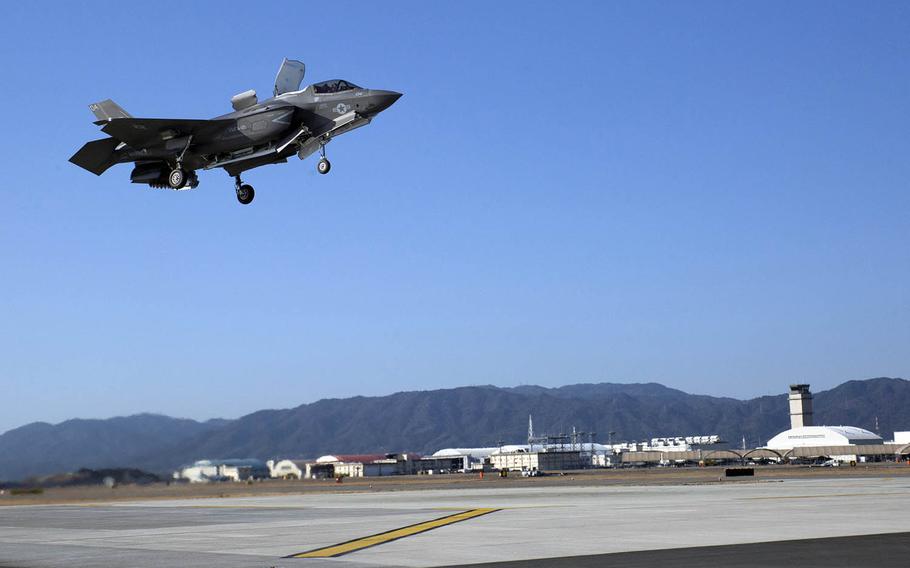
A Marine Corps F-35B Lightning II with Marine Fighter Attack Squadron 121 lands vertically at Marine Corps Air Station Iwakuni, Japan, Feb. 3, 2017. (Donato Maffin/U.S. Marine Corps)
Military flights at a Marine Corps air station in Japan will be kept to a minimum around the New Year, according to a statement Friday from the installation’s commander.
In recognition of the holiday, “only the absolute minimum level of mission-essential flight activity will be permitted” at Marine Corps Air Station Iwakuni from Jan. 1 to Jan. 3, said the statement by Col. Richard Fuerst.
Fuerst’s order does not affect commercial flights, the statement said. Iwakuni Kintaikyo Airport, which serves the city of Iwakuni, uses the air station’s runway.
The order is a departure from previous years’ practices and recognizes the holiday’s importance to the surrounding community, the statement said. Fuerst consulted with the city and “partnering military commands” in crafting the order.
The Japan Maritime Self-Defense Force shares the installation with the Marines.
A corporal manning the phones Friday afternoon at MCAS Iwakuni Communication Strategy and Operations said no one was available to comment further on the order. An email query to III Marine Expeditionary Force was not answered Friday.
An increase in aircraft numbers at the air station the past two years raised concern from its host city about additional noise from flight operations.
The recent relocation of Carrier Wing 5 from Naval Air Facility Atsugi more than doubled the number of aircraft at Iwakuni.
The carrier wing deploys with the aircraft carrier USS Ronald Reagan, homeported at Yokosuka Naval Base.
Just ahead of the carrier wing, F-35B Lightning II stealth fighters — short takeoff/vertical landing aircraft flown by Marine Fighter Attack Squadron 121 — arrived at Iwakuni in January 2017.
Iwakuni City Mayor Yoshihiko Fukuda in August 2016 promised the city would use data from a demonstration by an EA-18G Growler to ensure “noise and safety precautions” were in place before the wing arrived.
The Growler — an F/A-18F Super Hornet modified for electronic warfare — recorded noise levels as high as 97 decibels about a half-mile from base and 105.5 decibels on base. A subway train can produce about 100 decibels.
Earlier this month, Fukuda asked without success that MCAS Iwakuni suspend flight operations following a midair collision Dec. 6 that killed six of seven Iwakuni-based Marines aboard an F/A-18 Hornet fighter and a KC-130J Hercules refueler during nighttime training over the Pacific Ocean.
Fukuda asked Fuerst to suspend all operations until the cause of the accident was clear, according to a report in The Washington Post.
Fukuda, the Post reported, also expressed concern about the frequency of accidents involving U.S. military aircraft.
ditzler.joseph@stripes.com Twitter: @JosephDitzler